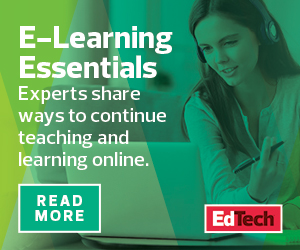Online classes are not new to K–12 schools, but until recently they generally played out in a very different way.
Students at traditional public schools may have taken one class online, but not all of them.
The duration of virtual instruction is another example. Of the schools that dabbled in remote learning, most saved it as an option to continue operations during inclement weather or similar emergencies. Schools shuttered for days at a time, not weeks or months. Districts also had time to prepare and test plans to distribute devices and create appropriate instruction. That was the case for Gwinnett County Public Schools in Georgia, which in 2018 implemented virtual snow days the district calls digital learning days. Making that shift offered an opportunity to work through logistical challenges and train staff.
“You don’t know what you don’t know until you get to a day where you’re stressing the full system,” Kennedy told EdTech last year.
The coronavirus pandemic sent most K–12 schools and districts scrambling to implement remote learning, learning those hard lessons along the way.
Many administrators, teachers and parents turned to social media to share advice, voice frustrations, describe disparities and highlight lighter moments. Here are a few tweets that capture the new reality of remote learning.


On Ensuring Accessible Remote Learning
A crucial component of remote learning is ensuring students can access instruction. Do they have the devices they need? Do they have reliable high-speed internet connections? Many administrators found that, for a significant number of their students, the answer to those questions is no.
On Protecting Student Data from a Distance
Another issue educators grapple with (or should) during remote learning is data privacy. Experts warn to be careful downloading software or using applications that were not created specifically for education or vetted by the district. They also caution against practices that might compromise students’ information and violate federal laws such as the Family Educational Rights and Privacy Act, commonly known as FERPA.
MORE ON EDTECH: Discover how educators are keeping students engaged remotely.
On Maintaining Connections and Relationships
The pivot to remote learning forced educators to not only manage virtual classes but to do so while also handling pandemic-induced struggles in students’ personal lives. Teachers have made extra efforts to reach students who haven’t checked in for instruction. They have distributed meals to hungry students. Some have also 3D-printed personal protective equipment for area healthcare workers. The experience highlights the importance of teachers’ relationships with students as well as administrators’ connections to teachers.
On Appreciating the Positive Moments
Many educators and parents took to social media to express another common experience with remote learning: It’s tough. But lighter moments still emerged from the struggles.
Alina Kvaratskhelia/Getty Images










